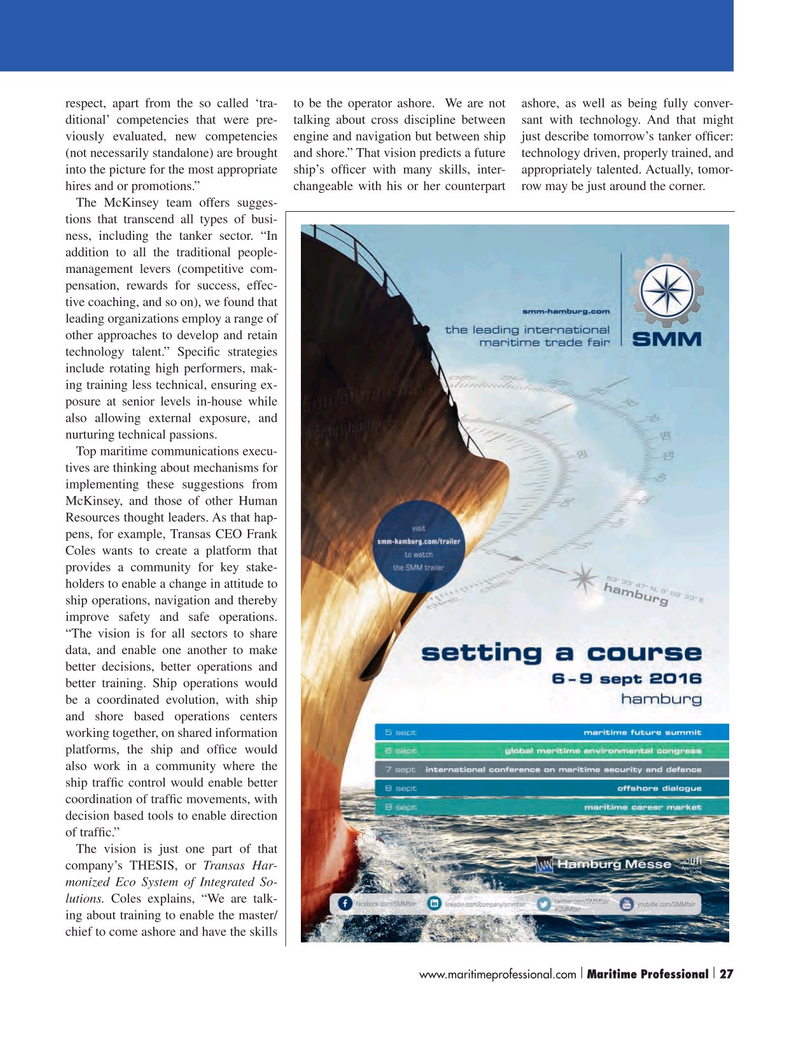
Page 27: of Maritime Logistics Professional Magazine (Q2 2016)
Energy Transport & Support
Read this page in Pdf, Flash or Html5 edition of Q2 2016 Maritime Logistics Professional Magazine
respect, apart from the so called ‘tra- to be the operator ashore. We are not ashore, as well as being fully conver- ditional’ competencies that were pre- talking about cross discipline between sant with technology. And that might viously evaluated, new competencies engine and navigation but between ship just describe tomorrow’s tanker of? cer: (not necessarily standalone) are brought and shore.” That vision predicts a future technology driven, properly trained, and into the picture for the most appropriate ship’s of? cer with many skills, inter- appropriately talented. Actually, tomor- hires and or promotions.” changeable with his or her counterpart row may be just around the corner.
The McKinsey team offers sugges- tions that transcend all types of busi- ness, including the tanker sector. “In addition to all the traditional people- management levers (competitive com- pensation, rewards for success, effec- tive coaching, and so on), we found that leading organizations employ a range of other approaches to develop and retain technology talent.” Speci? c strategies include rotating high performers, mak- ing training less technical, ensuring ex- posure at senior levels in-house while also allowing external exposure, and nurturing technical passions.
Top maritime communications execu- tives are thinking about mechanisms for implementing these suggestions from
McKinsey, and those of other Human
Resources thought leaders. As that hap- pens, for example, Transas CEO Frank
Coles wants to create a platform that provides a community for key stake- holders to enable a change in attitude to ship operations, navigation and thereby improve safety and safe operations. “The vision is for all sectors to share data, and enable one another to make better decisions, better operations and better training. Ship operations would be a coordinated evolution, with ship and shore based operations centers working together, on shared information platforms, the ship and of? ce would also work in a community where the ship traf? c control would enable better coordination of traf? c movements, with decision based tools to enable direction of traf? c.”
The vision is just one part of that company’s THESIS, or Transas Har- monized Eco System of Integrated So- lutions. Coles explains, “We are talk- ing about training to enable the master/ chief to come ashore and have the skills www.maritimeprofessional.com Maritime Professional 27| |
MN May16 Layout 18-33.indd 27 5/19/2016 11:23:04 AM

 26
26

 28
28
